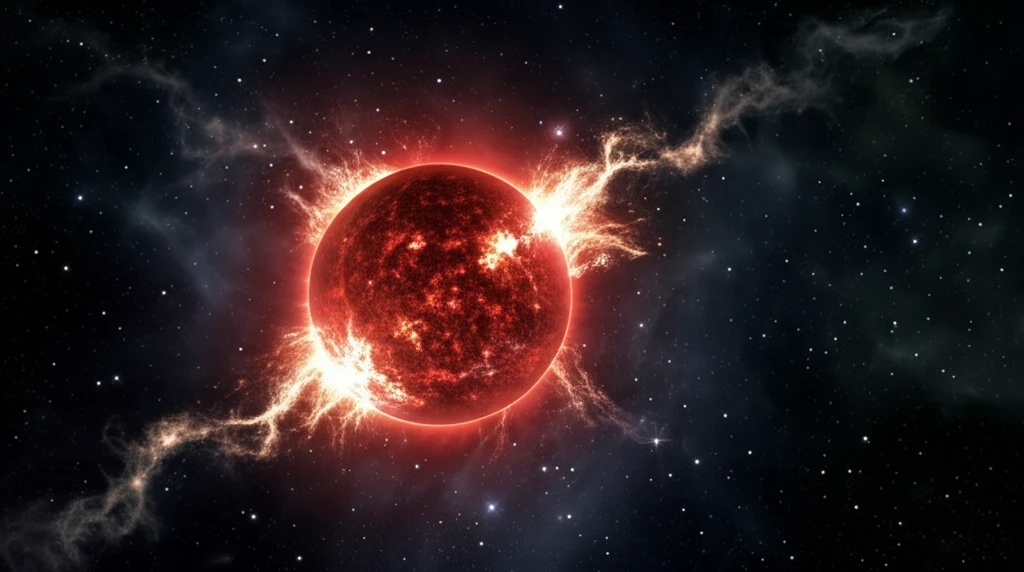
Red Giants in the Galactic Bulge: What High Mass-Loss Reveals About Stellar Evolution
"Uncover how extremely red stars are reshaping our understanding of stellar lifecycles and galactic composition."
In the heart of our galaxy, nestled within the Galactic bulge, lie ancient stars known as asymptotic giant branch (AGB) stars. These stars, nearing the end of their lives, undergo dramatic transformations, shedding substantial amounts of their mass into the surrounding cosmos. Astronomers have long been intrigued by these stellar behemoths, particularly those exhibiting extreme redness due to the dense clouds of dust enveloping them. This dust, composed of elements forged in the stars' cores, obscures their visible light, rendering them prominent infrared sources. The expelled material enriches the interstellar medium, providing the raw materials for the birth of new stars and planetary systems.
A recent study focuses on these extremely red AGB stars, specifically within the Galactic bulge. The research, led by F. M. Jiménez-Esteban and D. Engels, delves into the characteristics of these stars, challenging existing models of stellar evolution. Traditional models suggest that stars in a specific mass range should transition into carbon stars as they approach the AGB phase. However, observations of the Galactic bulge reveal a surprising abundance of oxygen-rich stars, defying these predictions. Understanding this discrepancy is critical for refining our comprehension of how stars evolve and contribute to the chemical makeup of galaxies.
The impetus behind this research was to understand the disconnect between the theoretical expectations of stellar evolution and the observational data from the Galactic bulge. By analyzing the spectral energy distributions (SEDs) of these stars and comparing them with stellar models, the researchers aimed to determine the mass range of the most reddened AGB stars and to investigate the reasons behind their unexpected chemical compositions. This exploration promises to shed light on the complex interplay between stellar mass, metallicity, and evolutionary pathways in one of the most densely populated regions of our galaxy.
How Do Reddened AGB Stars Defy Stellar Evolution Models?

The recent study employed virtual observatory tools to construct spectral energy distributions (SEDs) for a sample of 37 evolved stars in the Galactic bulge. These stars were selected for their extremely red IRAS colors, indicative of substantial mass loss and dust obscuration. Using DUSTY models, the researchers fitted the observational data to infer bolometric fluxes, which represent the total energy output of the stars. After accounting for interstellar extinction—the dimming and reddening of starlight by intervening dust—the team determined the luminosities and mass-loss rates of the stars.
- Luminosities: Ranged from approximately 3,000 to 30,000 times the luminosity of our Sun (L☉).
- Mass-Loss Rates: Varied from 10-5 to 3 × 10-4 solar masses per year (M☉ yr-1), indicating rapid expulsion of stellar material.
- Mass Range: Estimated to be between 1.1 and 6.0 solar masses (M☉), assuming solar metallicity.
What's Next?
The future of AGB star research involves more in-depth study of chemical composition, spatial distribution within the Galactic bulge, and comparison with stellar populations in other galaxies. New details will likely provide the answers needed to help better understand how stars evolve and change the galaxies around them.
